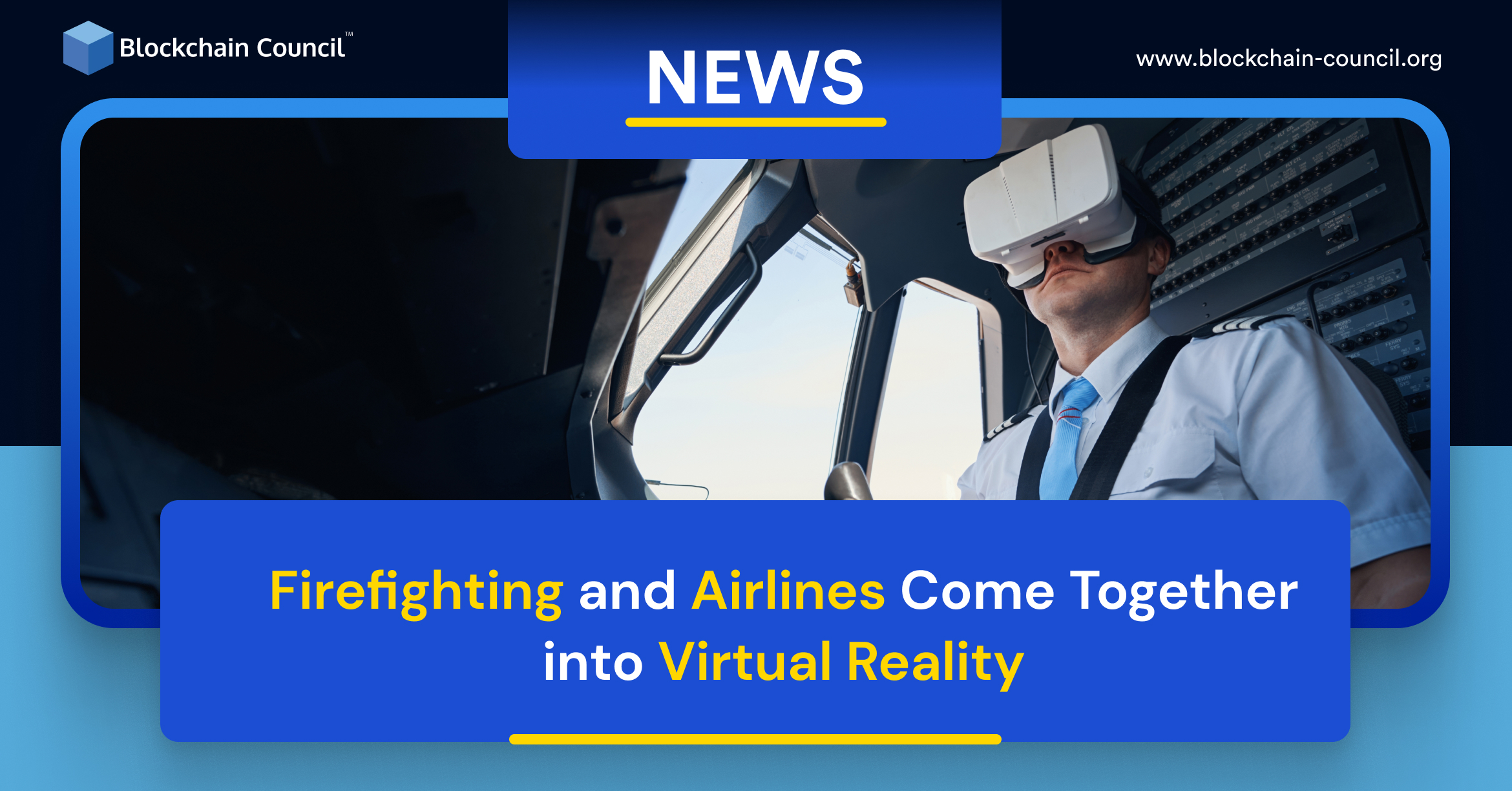
- Blockchain Council
- September 17, 2024
The world’s biggest telecom industry trade show, MCQ (Mobile World Congress), is in place, and the stage is set with various concepts of how the future of technology would look like. During the show, SK Telecom, a South Korea-based company, revealed an air taxi with a mockup that was one of the most popular reveals of MWC 2023. In the mockup, the company asked visitors to onboard the air taxi to try the immersion of different realities together as soon as they put on their VR glasses.
The air taxi takes off in style. As soon as it makes you feel like leaving the land and launching into the sky, you will be amazed at a virtual avatar popping on the screen ahead of you. The setup for this air taxi combines a VR headset and motion-simulating seats that can imitate a motion in real time by pitching side to side & back and forth to give you a maneuvering and hovering feel.
This was one of many amusing tech products being revealed on the biggest stage in the world. Several wireless carriers and tech companies showcased their developed concepts and innovation to connect with geeky audiences and businesses. However, Metaverse turned out to be the field businesses are focusing aggressively in.
Metaverse exploded in popularity in late 2021 when Facebook CEO Mark Zuckerberg announced the rebadging of the parent company of Facebook to Meta. Additionally, Meta has invested heavily despite losses. Mark Zuckerberg played it smart and portrayed the Metaverse as a virtual space allowing the audience to interact, play games, shop, travel, and connect. The idea was good and sounded cool to tech geeks around the world. But, the layers started taking off soon, and the idea of investing in Metaverse got global backlash from experts, saying it is too early and the market is not ready to adopt Metaverse.
Reality Labs, the company that manufactures the VR headsets for Meta, Quest, posted whooping operating losses of USD 13.7 billion. Their sales figures revealed a 2% dip in annual VR headset sales in the United States region.
Recently, Meta announced that it would invest in Metaverse development across Europe. As a part of this investment, the company plans to hire 10000 engineers to work for the expansion in the region. But the question sticks, how to make the Metaverse profitable and generate logical use cases from this amazing futuristic technology apart from the obvious use cases like Gaming?
As a result of continuous backlash and failure of idealistic implementation in Metaverse, Meta slowed their plans of expansion in Europe. The company said its plan to expand in Europe was a long-term plan that would be executed over time. An analyst from Gartner, one of the most renowned research and analysis agencies, Tuong Nguyen, said that Metaverse differs from virtual and augmented reality. Defining it properly is not as easy as it seems and sounds. He said, “So AR and VR are very closely related to the Metaverse like computers are related to the Internet.”
When asked how to categorize SK Telecom’s innovative Air Taxi technology, Ken Wohn, a company manager, said, “Technically, it’s not Metaverse, but kind of Metaverse.” He added that South Korea’s leading Telecom provider collaborated with California’s Joby Aviation to build an electric air taxi service. Now to help you understand why a Telecom provider is interested in Metaverse. Well, after all, it’s all about the Internet. Apart from that, these electric air taxis may operate automatically utilizing high-speed data connections like 5G, offering a lag-free Metaverse experience.
Another significant demonstration of Metaverse technologies was by the French Wireless Company Orange. They transported visitors to a fictional neon-hued space with giant robots, lightning bolts, and whatnot. If you are a Marvel fan, you can think of it as Stark’s lab. Suddenly, a dancing figure appeared, demonstrating the moves of a real-life dancer with motion capture gears. Again, the same question is, how can it be used as a revenue-generating product for the audience?
Several other applications based on Metaverse were more meaningful than these gamified versions of Marvel movies. These applications were designed to train the ground support staff for repetitive, risky tasks like firefighting. A Spanish startup, La Frontera, demonstrated a Metaverse-based application that can transform its looks based on what you want to do in the Metaverse. For instance, they started the demo with a beach view with beautiful palm trees, boulders, and a light blue sea. Marta Ortiz de Lucas-Baquero, a business development executive, joined visitors on the beach with her virtual avatar and demonstrated how their Metaverse has elements of the real world where you can do everything from office meetings to physical tasks with active motion sensors, of course.
Marta also explained that Metaverse could be a gateway to solve business problems like showcasing products that are too big to move or too small to see. We discuss defense deals, motor vehicle shows, and chemical research demonstrations. They had a catalog prepared to demonstrate a Jet fleet in Metaverse and explain blood flow through blood vessels using the inside view of a blood vessel in Metaverse.
She started with a conference room and suddenly transformed the environment into an overturned tanker on fire. Soon, a virtual fire extinguisher popped up in thin air, and she asked visitors to grab it with a virtual avatar and use it to put out the fire as we do in the real world. It adequately demonstrated how Metaverse could be used for learning purposes and risky tasks.
Join the ranks of top Virtual Reality (VR) Developers with our certification program – enroll now and start learning!






































































 Guides
Guides News
News Blockchain
Blockchain Cryptocurrency
& Digital Assets
Cryptocurrency
& Digital Assets Web3
Web3 Metaverse & NFTs
Metaverse & NFTs
